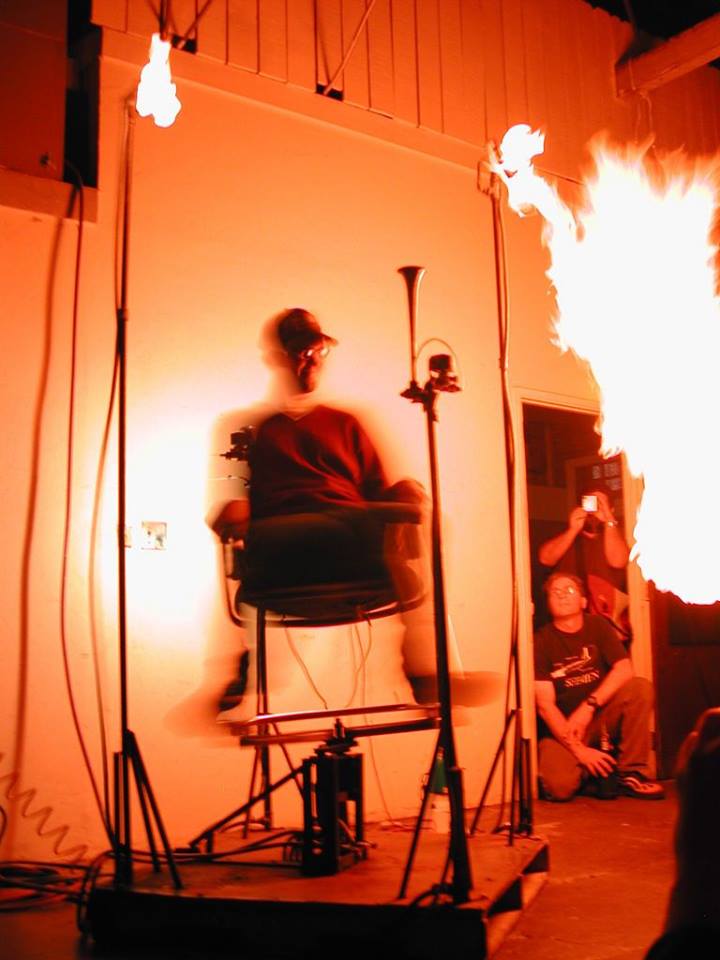The twists of my medical adventures became even more bizarre in a saga that lasted for several months. Once again, a mystery would change the course of my life, bringing me further into the family of my close friend Yinka Ogunro. A close confidant through thick and thin, our shared love of music has been a beacon over time. For nearly twenty years, he’s enthralled me with tales of his inventive namesake father – an upper extremity orthopedic surgeon known by most as “Dr. O.”
The first time we met, Dr. O spent twenty minutes trying to dislocate my shoulder, which I thought was the source of my recurring pain. He administered a battery of tests with the loose focus of a jazz drummer setting up his kit, asking questions with an organic curiosity. He referred me to a nerve specialist who electrically tested the nerves in my arms. The problem was not the shoulder, so I took my films to a spine doctor who prescribed a series of neck injections, which proved helpful but left me with residual pain. For this, they gave me a TENS or transcutaneous electrical nerve stimulation, a unit that uses pulses to alleviate pain.
I returned to Dr. O’s office because the pain doctor had denied the electricity’s connection to the now constant pain engulfing my arm. In his first analysis, Dr. O didn’t know what to make of it. I believe the hemangioma – a sort of vascular cluster – had always been there. But there was no way for me to know that not everybody’s funny bone shot lightning into their pinkie finger. I imagine further that all of the steroids I had taken for previous maladies had helped it gain size.
They outfitted me with an arm brace that locked my arm at nearly a right angle, which required a sling. He prescribed large red anti-inflammatory pills to keep the jagged, inflamed pain at bay until the good doctor could better understand what was going on. Seemingly without warning, I could be overcome by extreme jolts downward from the elbow of heat, electricity, or even icy cold. There was an upheaval of every activity in my daily life. There were frequent office visits – including sensation tests, which demonstrated that I was losing significant feeling down the arm and into the outside fingers.
As a writer, my hands have always been instrumental in processing the ideas at the heart of whatever words I may endeavor to write. First, I compose black scribbles on loose-leaf paper. Next, I utilize the wrist’s rotational joint for the keyboard, deepening what the pen began. I struggled to implement dictation software. I don’t know if Broca or Wieneke discovered the area where my writing process issues originate. The speaking collided with my dependence on music to train my focus. Where I could modulate the music’s pace, volume, and intensity to suit my writing needs, my voice invariably made me more anxious and unresolved.
A group of us were standing on my cousin’s porch when my girlfriend pointed out a protrusion beneath my elbow that “didn’t look right.” It was like a push-button of pain, and her noticing it changed the course of treatment dramatically. When I showed Dr. O the mass, he manipulated it, moving my arm into different positions, and finally suggested an MRI might reveal our culprit. Back in the tube, my right arm was isolated, which kept me in an awkward position. I was, however, becoming adept at slipping my mind out of my body as the machine buzzed noisily around me – the hint of a popular country radio station fluttering beneath it.
Two months before my imminent surgery to remedy the worsening situation, my girlfriend and I rescued a little black dog with smoky grey bits. He was six pounds and eight weeks old, a little dirty but full of love. I immediately called him “Mingus” after the composer and bass player, Charles Mingus, who’s Beneath the Underdog has been hugely influential. With one bad arm, I did my best to keep up with my new friend, fighting off the isolation that can accompany pain from an unknown source.
The mass had grown into the ulnar nerve, and its presence was causing all sorts of confusion. As Dr. O explained it, the nerves are like the bundles of wires used in suspension bridges, and the surgeon would tease the hemangioma out tediously. He booked a surgical center with the best optics, drafting Yinka’s younger sister, Shade, to handle the four-hour procedure. Her young eyes and small hands left an elegant scar along the curve of the joint.
The next year, as my eyes were beginning to fail, the ulnar nerve’s problems returned. Every couple of months I’d have another MRI to monitor its progress. Eventually, he referred me to a Radiation Therapist at the Cancer center, ultimately prohibited by the proximity to a significant nerve prohibited. It remains in a happy medium near the nerve but not choking its internal circuitry.
He described the nerve as a bundle of wires that required the surgeon to tease the growth out very carefully to minimize damage. There’s no way to avoid a lengthy period for the nerve to recover any sense of normalcy; five years was the expected timeline. And that would be if the hemangioma didn’t grow back, which it eventually did.



